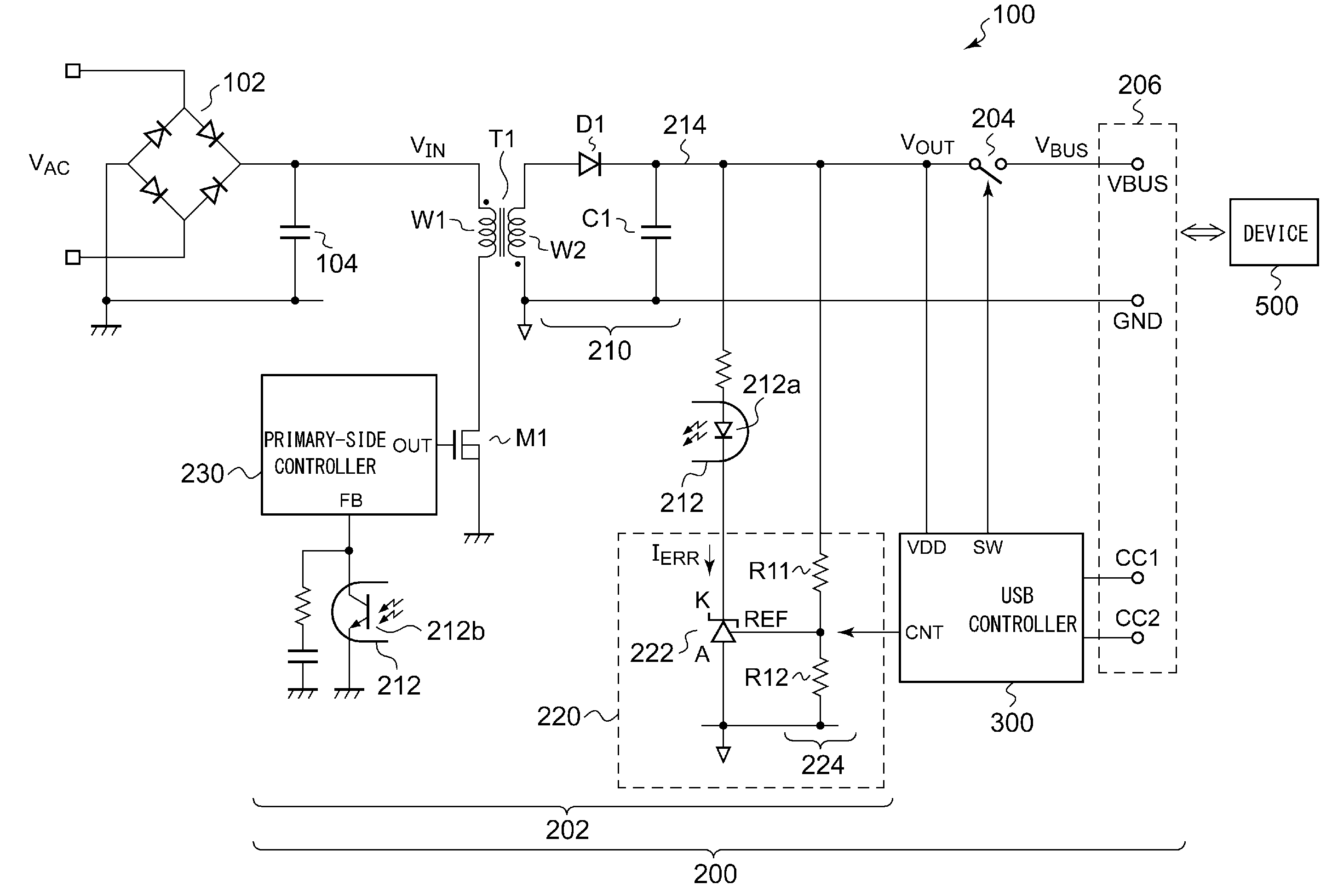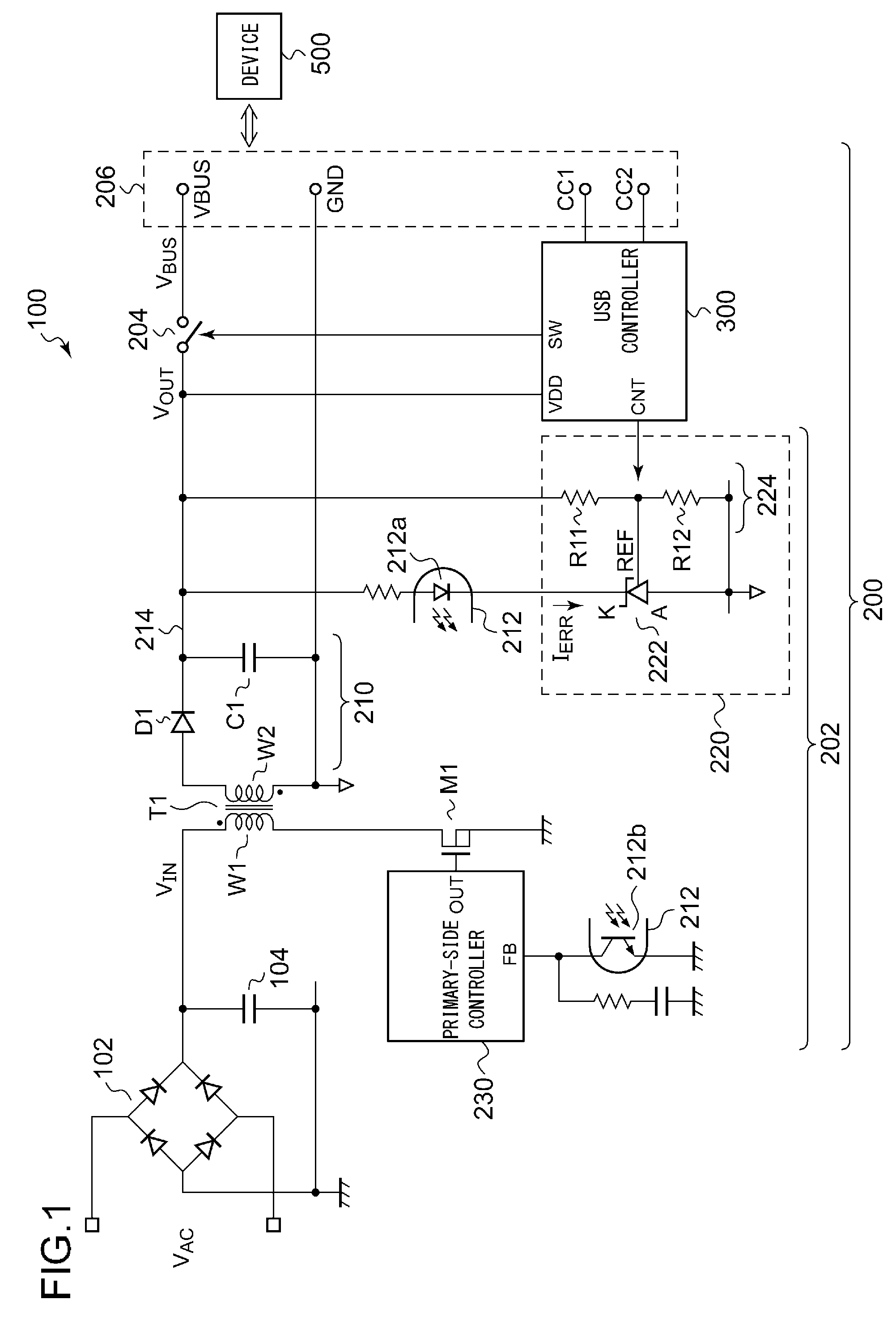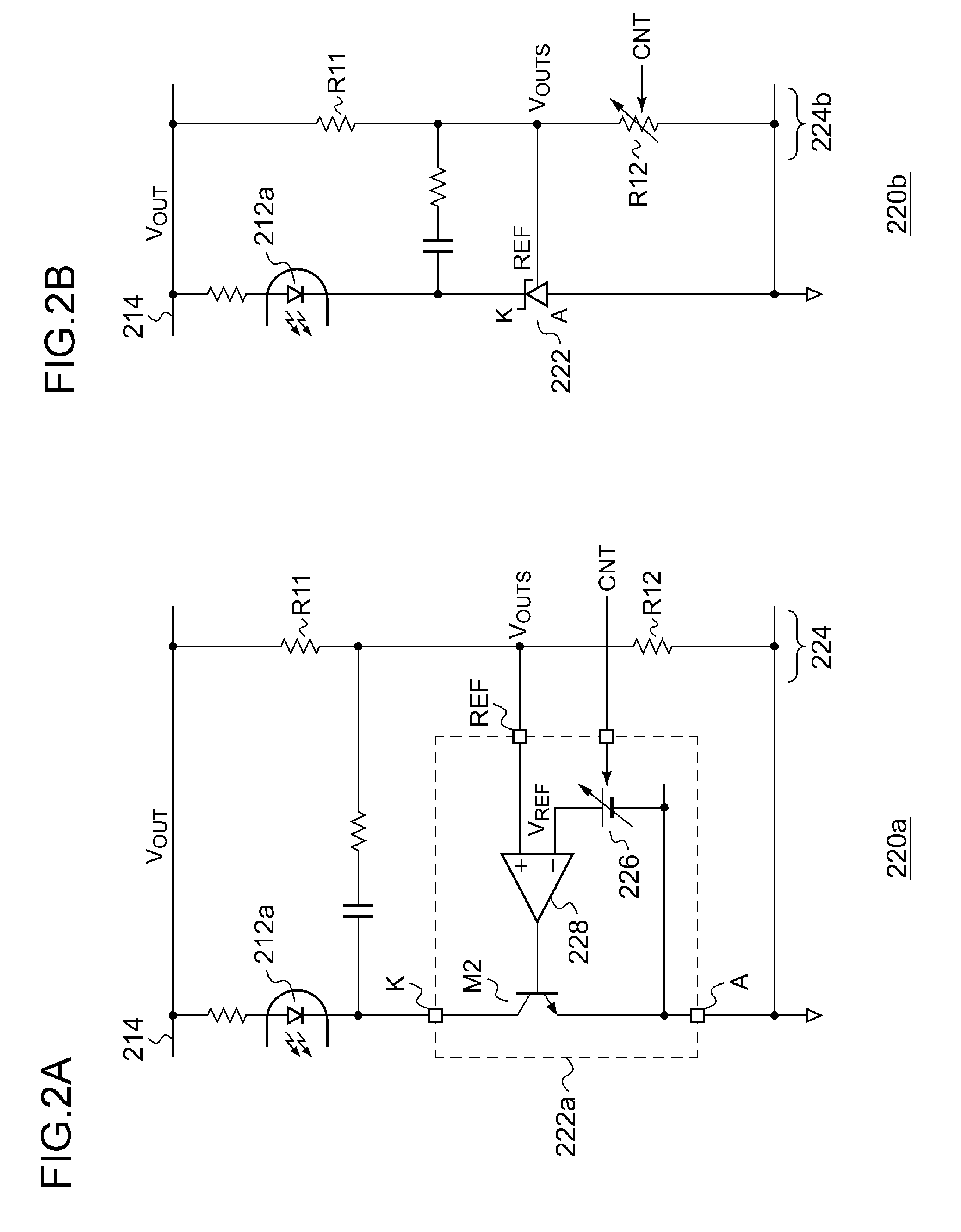Bus controller
- Summary
- Abstract
- Description
- Claims
- Application Information
AI Technical Summary
Benefits of technology
Problems solved by technology
Method used
Image
Examples
first modification
[0103]Description has been made in the embodiment regarding the USB controller 300 that supports both the USB-PD specification and the USB Type-C specification. However, the present invention is not restricted to such an arrangement.
[0104](i) For example, the present invention is also applicable to the USB controller 300 that supports only the USB Type-C specification. In this case, with such an arrangement, only V1=5 V is prepared as the specified voltage level. Also, the DC / DC converter 202 may preferably be configured to switch the DC voltage VOUT between two values, i.e., V0 and V1.
[0105](ii) Conversely, the present invention is also applicable to the USB controller 300 that supports only the USB-PD specification. In this case, a function for detecting the cable orientation or the like may be omitted.
second modification
[0106]Description has been made in the embodiment regarding the USB controller 300. However, the present invention is not restricted to such an arrangement. In addition to the present USB standard, the present invention is applicable to other USB standards which will be developed in the future, and voltage supply systems employing a similar architecture derived from the USB standard. Also, the kind of bus is not restricted to such a USB bus. Also, the present invention is applicable to other standards that differ from the USB standard, examples of which include the Quick Charge standard. The Quick Charge standard (Quick Charge 2.0) supports bus voltages VBUS of 5 V, 9 V, and 12 V.
third modification
[0107]Description has been made in the embodiment regarding the DC / DC converter 202 configured as a flyback converter. However, the topology of the DC / DC converter 202 is not restricted in particular. For example, the DC / DC converter 202 may be configured as a synchronous rectification DC / DC converter. Also, the DC / DC converter 202 may be configured as a forward converter. Also, the DC / DC converter 202 may be configured as a converter employing an inductor, instead of a converter employing the transformer T1.
PUM
 Login to View More
Login to View More Abstract
Description
Claims
Application Information
 Login to View More
Login to View More - R&D
- Intellectual Property
- Life Sciences
- Materials
- Tech Scout
- Unparalleled Data Quality
- Higher Quality Content
- 60% Fewer Hallucinations
Browse by: Latest US Patents, China's latest patents, Technical Efficacy Thesaurus, Application Domain, Technology Topic, Popular Technical Reports.
© 2025 PatSnap. All rights reserved.Legal|Privacy policy|Modern Slavery Act Transparency Statement|Sitemap|About US| Contact US: help@patsnap.com



